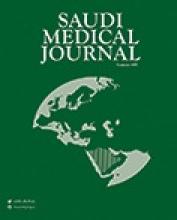Abstract
Myiasis is a parasitic infestation of vertebrate animals caused by the eggs and larvae of flies within the Diptera species. Psychoda albipennis is a rare cause of urogenital myiasis in humans. We present the case of a 42-year-old male diagnosed with urogenital myiasis caused by Psychoda albipennis.
Myiasis is derived from the Greek word ‘myia’, which means fly. It is an infestation of the skin, tissues or organs of humans or other vertebrate animals caused by the eggs and larvae of flies within the Diptera species.1 Myiasis can manifest in various body parts, such as the eye, nose, ear, skin, gastrointestinal system and urogenital system.2 Psychoda albipennis (P. albipennis) can thrive in the environment of a moist bathroom and may cause urogenital myiasis in humans.3 This insect typically lives in tropical or subtropical regions and usually appears during the summer. We report the case of a 42-year-old male who was diagnosed with urogenital myiasis caused by P. albipennis.
Case Report
A 42-year-old male patient presented to the urology outpatient clinic with a complaint of moving, worm-like objects in his urine for the past 3 weeks. No history of travelling abroad, and his medical history was not significant. Physical examination was unremarkable other than mild obesity (body mass index: 32.28). During macroscopic examination of his urine, 2 0.8-cm-long worms were detected. The worms were examined under the microscope and they were diagnosed as being in the fourth larval stage of P. albipennis (Figures 1 & 2). Urinalysis results were remarkable, with 7 erythrocytes per high power field. The complete blood count and serum chemistry were within normal limits. Urinary ultrasonography did not reveal any pathology. The urine culture was negative for infection. He was scheduled for cystoscopic evaluation. He was also instructed to drink 3 liters of water per day and was prescribed oral nitrofurantoin 50 mg 3 times a day. Cystoscopic evaluation was performed one week after. Edema in the prostatic urethra was noted, with debris and sediment accumulation at the base of the bladder. He was discharged on the same day and he reported resolution of his symptoms at a follow-up visit one week postoperatively.
The fourth stage larvae of Psychoda albipennis.
Syphon of the Psychoda albipennis.
Discussion
Urogenital myiasis is a very rare clinical entity caused by Sarcophaga spp., Megaselia scalaris, Thyrsocnema incisilobata, Lucilia sericata, Eristalis tenax, Dermatobia hominis, Chrysomya bezziana, Fannia canilicularis, and P. albipennis.2,4-9 Psychoda albipennis is known to exist in temperate regions of Europe and China.10 It is common in various provinces of Turkey including Ankara, Edirne, Tekirdag, Istanbul, and Bursa.6 The larvae of P. albipennis thrive in damp and dirty areas, rotting fruit and vegetables, garbage piles and irrigation canals. The fourth stage larvae infest the urine of humans. Its gross appearance is of whitish-grey, slightly flat worms, approximately 3-5 mm in diameter. The larva has a double knob covered with long hair at the end as well as a syphon that narrows from the base to the tip.2,10
To our knowledge, this is the seventh case of urogenital myiasis caused by P. albipennis, and all previous reported cases were also from Turkey.2,3,5,6,11,12 Predisposing factors for urogenital myiasis are poor hygiene, limitation of mobility, urinary obstruction, sleeping without a blanket in the summer months and low socioeconomic levels.13 However, a significant portion of urogenital myiasis cases have been reported from developed countries and in patients with good hygiene.14 Our patient was living in an underdeveloped part of Istanbul; however, his personal hygiene appeared good. No other predisposing factors were identified. In patients with urogenital myiasis, symptoms often manifest as dysuria, polyuria, hematuria, flank pain, or vomiting.2,15,16 Urogenital myiasis can be misdiagnosed as an obstructing ureteral stone.6 Our patient did not present with any of these symptoms.
Treatment of urogenital myiasis varies according to localization of the infestation and severity of the symptoms. Removal of larvae, use of urinary tract antiseptics and antibiotics are all advocated, depending on the degree of symptoms.2,3,11,12 As with previously reported cases of urogenital myiasis caused by P. albipennis,2,6,11 we instructed our patient to drink 3 litres of water per day and prescribed a urinary tract antiseptic. We performed a cystoscopic examination to detect and remove the remaining larvae, none were observed at that time, most likely due to the one week delay between initial evaluation of the patient and time of the cystoscopy. However, signs of inflammation (edema and debris) were observed during the cystoscopy.
In conclusion, urogenital myiasis caused by P. albipennis is an extremely rare clinical entity. It can be managed with hydration and antiseptics. Health authorities must take appropriate precautions to maintain hygienic conditions, and urologists must be aware of these parasites for proper diagnosis and management of this infestation.
Footnotes
Disclosure. Authors have no conflict of interests, and the work was not supported or funded by any drug company.
- Received July 21, 2016.
- Accepted August 11, 2016.
- Copyright: © Saudi Medical Journal
This is an open-access article distributed under the terms of the Creative Commons Attribution-Noncommercial-Share Alike 3.0 Unported, which permits unrestricted use, distribution, and reproduction in any medium, provided the original work is properly cited.








